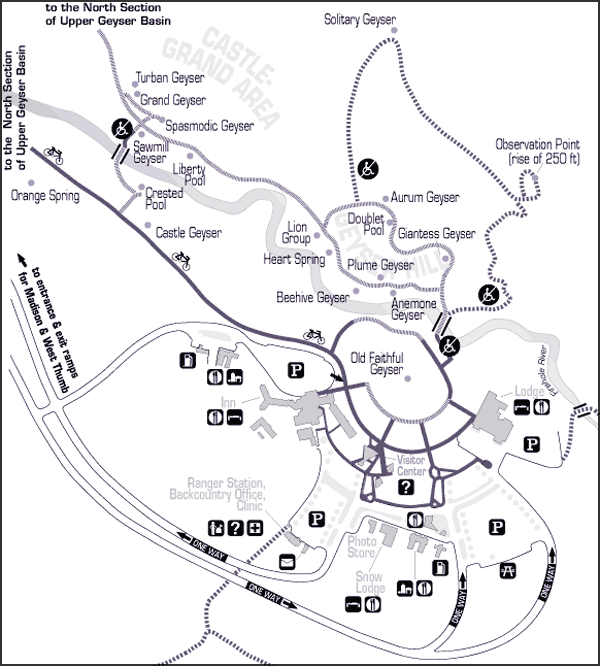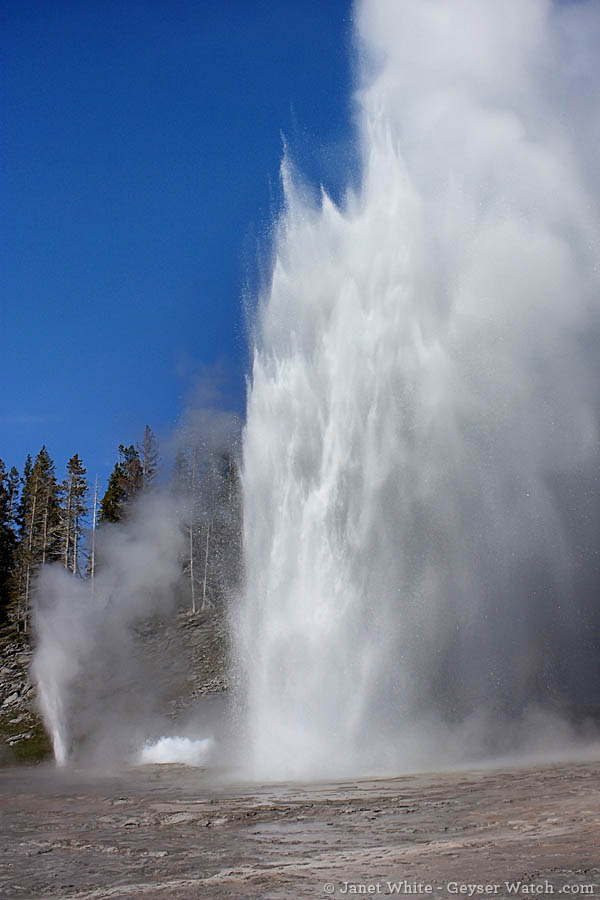
By Janet White
Old Faithful may be the most famous geyser in Yellowstone National Park — or anywhere, for that matter — but coming in a close second is Grand Geyser, the world’s tallest predictable geyser. It’s impressive, and two more geysers usually join in the eruption as well: Vent and Turban Geysers. Plus, it regularly has a second burst and occasionally has a third — sometimes even more.
So why isn’t Grand Geyser more well known? Because you need patience. The forecasted window of opportunity for an eruption of Grand Geyser (the prediction is in the middle) is four hours. In contrast, Old Faithful’s forecasted eruption window is 20 minutes. Four hours is a huge chunk of time to devote to one geyser when it’s also known to erupt at times outside of that window.
So, is it worth the wait? Yes! Definitely, yes. Grand Geyser is that rare geyser in Yellowstone that regularly receives applause at the end of its performance. Lately it’s been erupting around three times a day, or every 7 to 9 hours, with one or two eruptions happening during the daylight hours.
Where is Grand Geyser?
Grand Geyser is in the Upper Geyser Basin, a short 15-minute walk from Old Faithful. Head down the paved path that used to be the old road, and when you reach Castle Geyser, turn right onto the boardwalk. Keep going, and when faced with a choice of paths to take, turn left. Eventually you’ll reach the benches that arch around the Grand Geyser area. You can also reach it from Geyser Hill if you follow the boardwalk that cuts off near Lion Geyser.
When you get there, you may think the raised cone that splashes regularly might be Grand, but actually, that’s Turban Geyser. Grand is the pool below it.
How do you know when Grand Geyser ready to erupt?
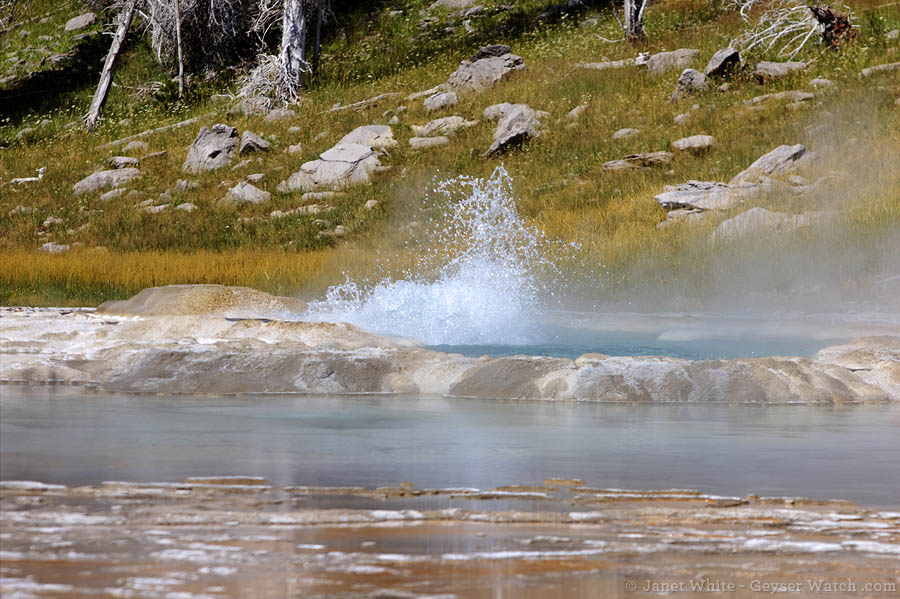
The ultimate answer is that geysers are geysers, and will do as they wish. But Grand Geyser has a sort of built-in timing mechanism in its neighbor, Turban Geyser. Turban Geyser erupts about every 20 minutes, and Grand is most likely to erupt right about the time that Turban is set to erupt. But you need to know one more thing – Grand Geyser’s pool needs to be full at the same time.
The term “full” (or “empty”) can be a bit confusing. To determine the water level, you pick out a small bit of the rock near Grand Geyser’s pool and watch the water level on it. The water in the Grand Geyser crater rises to the top and over some of the rocks, and then falls again. This gives you a good taste of “geyser gazing” — staring a bunch of rocks and water to note small changes that can indicate (hopefully) bigger things to come.
Turban Geyser predicts Grand Geyser
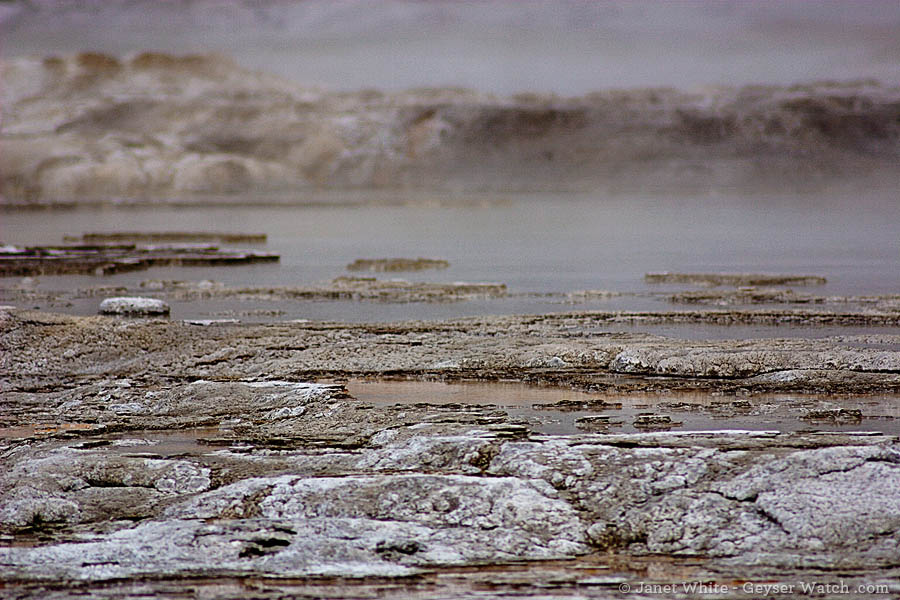
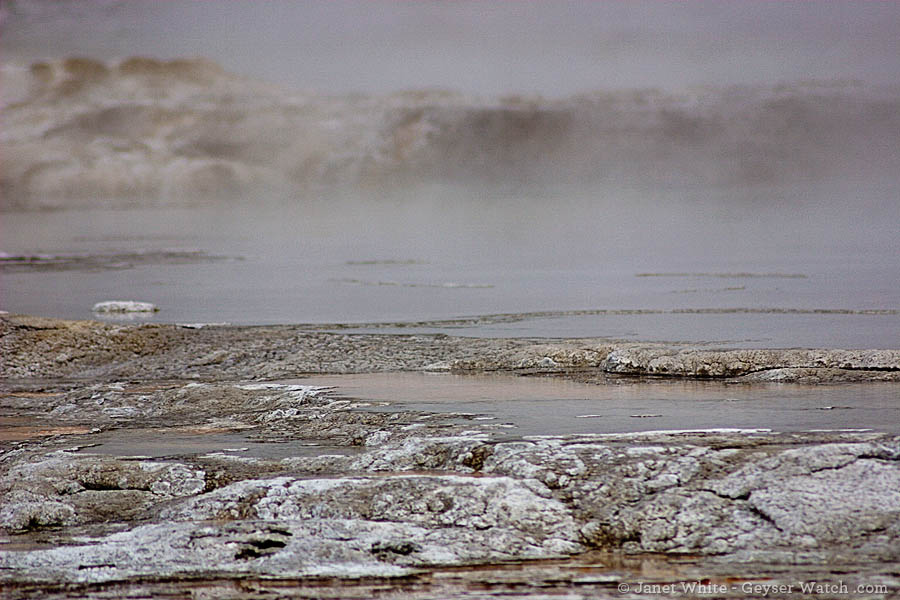
When the Grand Geyser pool is full, check the time for Turban. If Turban starts before Grand, and the water level on your bit of rock starts to drop, then it will be another 20 minutes at least. Many people visit with those near them on the benches, or bring books to read, or have something to keep kids occupied. (Consider something that won’t blow away in the wind or have small parts that will get lost). Or you can watch for wildlife on the hillside behind Grand Geyser. Marmots live in the rocks there, and it’s not uncommon to see a coyote passing by as well.
If it’s almost time for Turban to start, and the water level is high, then watch for an increase in the amount of water flowing out from Grand Geyser as well as a slight increase in steam. That’s when you might hear an experienced geyser gazer call out on a radio to alert other gazers and the staff at the Old Faithful Visitor’s Center. “Waves on Grand! Waves on Grand!” the call goes out. That’s normally a good sign that the eruption is very likely to start. The waves are caused by the sudden increased output of water, but are difficult to see unless you know where to look. But Grand Geyser may stall at this point, too. Geysers don’t ever give guarantees.
Wait for the final burst of Grand Geyser
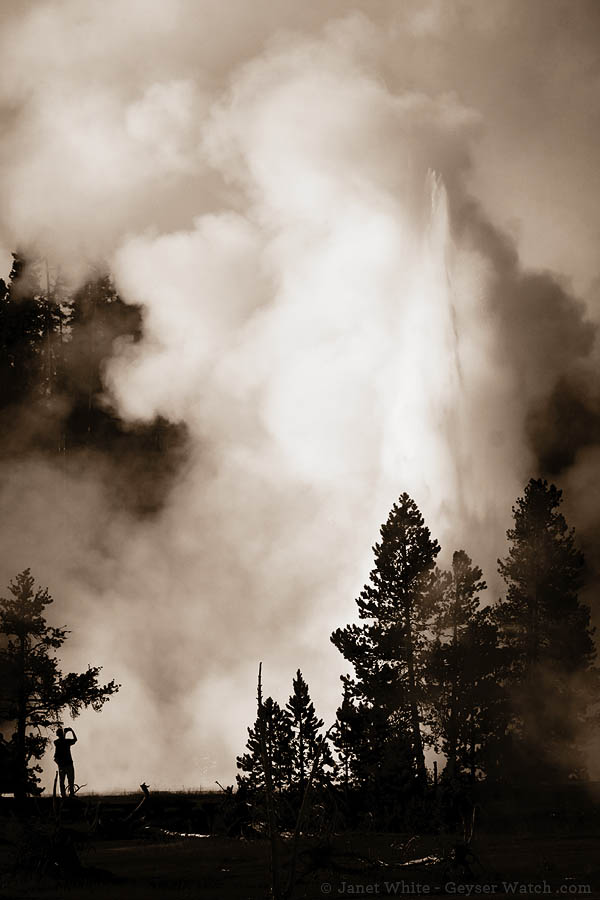
The first ‘burst’ from Grand Geyser may last for about eight minutes or so before calming down. (By comparison, Old Faithful’s eruptions typically last from about 90 seconds to five minutes.) But don’t walk away after Grand Geyser’s first burst if the crater still has water in it, because that’s a sign of a second burst likely to come. While some say the second burst is taller, others disagree. (I tend to think that it usually is because the lens I use for many of the shots I take barely fits the second burst in the frame. Completely unscientific, but it works for me.)
If the pool still remains full after the second burst, again, don’t walk away. You may be in for the treat of a third burst from Grand Geyser. In May of 2011, visitors were treated to an incredibly rare 6-burst eruption. So only leave once you see that the water has drained down the vent and you can see the ‘pillows’ of rock formations in the vent.
If you can take the time, make room for Grand Geyser, because it will be a highlight of your trip. Afterall, it is grand.
Janet White is the creator of GeyserWatch.com
If you go…
For more information about Grand Geyser, call the Old Faithful Visitor Center at 307-344-2751 or view an interactive version of the map below on the National Park Service website.

